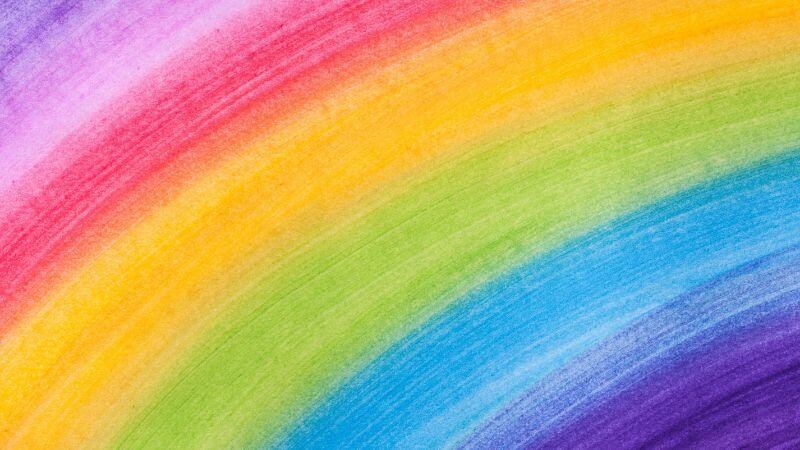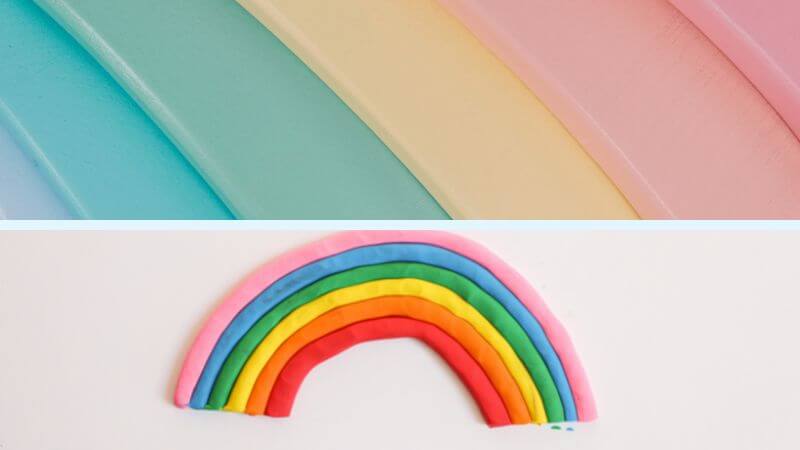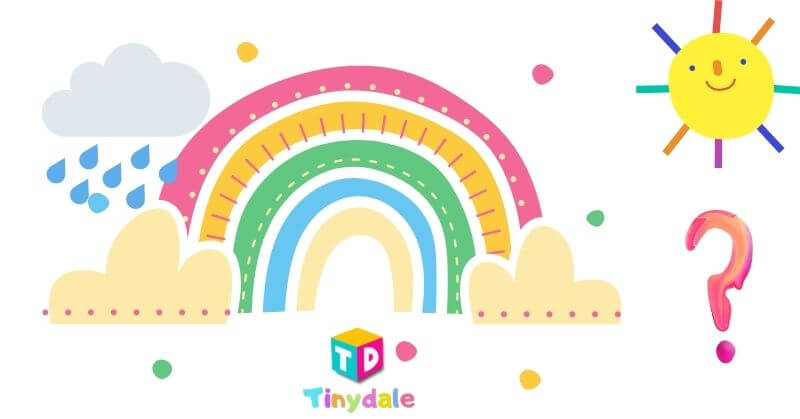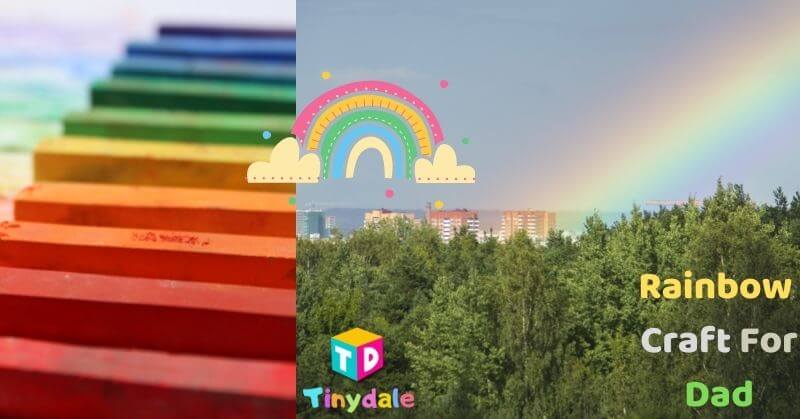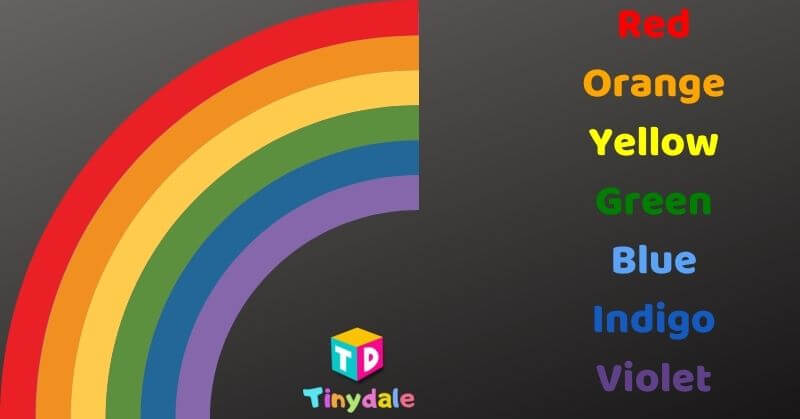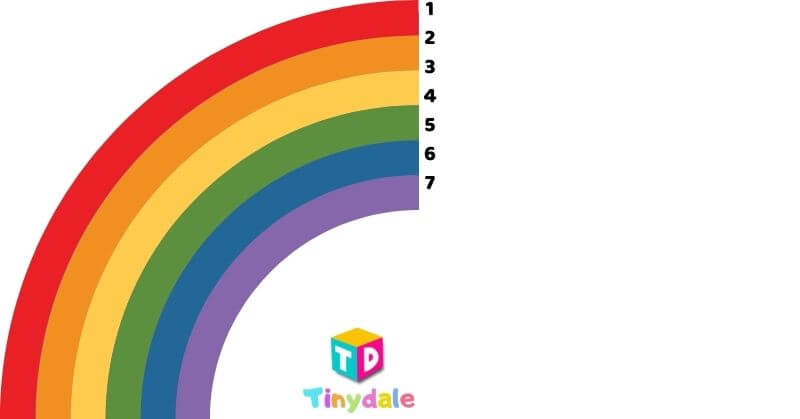The essay on rainbow for children and students is specially designed to explain that is thorough yet simple.
Writing essays is an effective approach for students to convey their understanding and viewpoints on a range of subjects.
It develops their verbal proficiency, encourages creativity, and sharpens their critical thinking.
Examining this topic demonstrates how nature can be both simple and complicated.
It also showcases the beauty and science of rainbows.
Children who start on this informative trip will know the strengths and advantages of well-expressed thought.
What Is A Rainbow?
A rainbow is a band of seven colours that starts at one end and ends at the other end after a brief period of rainfall.
When it is bright in some areas of the sky and raining in others, an arc of colour known as a rainbow will emerge in the sky.
It is visible after rainfall.
The rainbow’s vibrant colours are really attractive and seem to permeate the entire scene.
After looking at the rainbow, life becomes full of colours and positivity.
The surrounding area appears to be quite nice and fresh.
The rainbow improves the inherent attractiveness of the green environment by adding colour.
When Does A Rainbow Form?
A rainbow is created when the sun shines through raindrops while it is raining or recently rained.
What causes that to occur?
The sun is the source of sunlight. In space, there is a sun.
Sunlight must travel across space to reach Earth, and it does so in a variety of wavelengths.
Wavelengths come in many tones. They combine as they move and produce white light.
When the wavelengths pass through droplets of water (rain), they separate and appear as the colours of a rainbow.
Isaac Newton, a scientist, elucidated the formation of a rainbow.
He said that the rainbow’s colours make up sunlight.
White light is the result of combining all those colours. We observe white light daily.
White light is what we perceive when sunlight moves through the air in the same direction.
The colours divide when the sunlight passes through a raindrop, giving us the illusion of a rainbow.
Red, Orange, Yellow, Green, Blue, Indigo, and Violet are the hues of the rainbow.
Essay On Rainbow
An essay on rainbow in English is available.
You will understand the meaning of a rainbow, the colours that make one up, how one forms, and where one appears in the sky.
You will also learn what a double rainbow is, where the sun is when one forms, and other things after reading the words below.
10-Point Essay On Rainbow
This is the example of 10 point Essay On Rainbow:
- The Latin term “Arcus Pluvius” originates from where the modern English term “rainbow” originates from.
- Subsequently, proportionate to one another, the position of the sun and the rainbow’s elevations rely on one another.
- The earth’s largest spectrum was observed in Britain on March 14, 1994, for over six hours,
- A rainbow is a combination of reflection, refraction, and dispersion.
- Greater amounts of liquid molecules are present in the environment, especially in certain regions.
- Rainbows are more likely to appear next to waterfalls and reservoirs.
- The sole method to truly comprehend a rainbow is to witness it; they are an ethereal phenomenon of surroundings. You cannot touch them.
- Only when there are sufficient amounts of wet airborne particles and sunlight present can a rainbow occur.
- Rainbows are a symbol of peace and harmony and benefit our society in many cultures.
- Violet, indigo, blue, green, yellow, orange, and red are all hues that are present in a rainbow and are together called VIBGYOR.
Short Essay On Rainbow
Rainbows have long had a particular place in the hearts of people due to their fleeting beauty and amazing rainbow of colours.
They are the canvas that nature herself has created, painted with the strokes of sunlight and rainfall.
It reveals both its scientific basis and the wide range of feelings it arouses.
When sunlight and raindrops interact in the atmosphere, a rainbow is produced.
Red, orange, yellow, green, blue, indigo, and violet are the primary colours in the rainbow.
The size of the raindrops and the direction of the sun both affect how a rainbow will look exactly.
In addition to being significant in many cultures and faiths, rainbows have a scientific explanation.
They are representations of new beginnings, promises, and hope.
A rainbow after a storm or a downpour is a gentle reminder that beauty and light may still appear even in the most hopeless situations.
Literature and art, too, have celebrated this natural phenomenon, using it as a metaphor for hope, diversity, and unity.
Extensive Essay On Rainbow
In the sky, a rainbow appears like a curving, multicoloured arc.
Most rainbows form when the Sun’s rays strike raindrops falling from faraway rain clouds.
Rainbows appear in the part of the sky opposite the Sun, usually in the early morning or late afternoon.
In the shape of waves, sunlight moves through space.
To explain these waves, scientists employ a concept known as wavelength.
There are light waves with long wavelengths and light waves with small wavelengths.
Light rays of different wavelengths create colours.
All light waves often combine to create white light. Raindrops, however, split light waves apart as they travel through them.
This occurs as a result of the raindrops’ varying ability to bend light rays of various wavelengths.
The rainbow’s colours are the divided light waves.
A main bow is the form of the rainbow that is the brightest and most frequent.
Outside of the main rainbow, a fainter rainbow can occasionally occur.
This is referred to as a secondary bow or, sometimes, a double rainbow.
The light bends twice inside the water droplets, creating a secondary bow.
The first bend makes the primary bow, and the second bend makes the secondary bow.
The colours of the secondary bow appear in the primary bow’s colours in reverse order.
Fun Facts About Rainbow
Do you wish to hear a fascinating story? Each raindrop creates its rainbow!
Yes, every water drop creates its rainbow, but it takes millions of rainfall for us to see one.
Here is a collection of fascinating facts about this astronomical marvel for the curious youthful brains itching to learn more.
Let’s explore these amazing details that add to the wonder of the rainbow for kids.
- Red always occupies the outermost portion of a primary rainbow, whereas violet occupies the inside.
- The angle of a rainbow arch is 42 degrees, measured from the direction that faces away from the sun.
- Rainbows are complete circles, unlike the semi-circular arcs we frequently observe. The lower part is only blocked by the earth.
- The rainbow may appear the same, but it differs somewhat from person to person because everyone perceives raindrops differently.
- Have you ever noticed a little rainbow outside of a main one? That secondary rainbow has reversible colors.
- Rainbows do not just emerge during the day. Moonlight may form “moonbows” under the correct conditions, albeit fainter and sometimes colorless due to human eyes’ nocturnal sensitivity.
- Rainbows are only conceivable on Earth, the only planet in the solar system.
- Our eyes see seven colours in a rainbow, but there are numerous shades in between, so the true number is far more.
- While rain is the most common cause of rainbows, rainbows may also arise from mist, spray, and fog.
- The rainbow will be higher in the sky when the sun is lower in the sky. When the sun is higher in the sky, the rainbow will be lower.
Essay On Rainbow: Types
Although the typical arc-shaped rainbow is the most frequent one, there are several sorts of rainbows according to how they develop and look.
-
Primary Rainbow
The form of the rainbow that the sun (or solar light) most frequently produces is a primary rainbow.
When light passes through water vapour in the atmosphere, it bends and refracts, causing this phenomenon.
A circular arc of light reflects to the viewer as a result of this bending, which separates the light into its various wavelengths.
A primary rainbow always appears in the area of the sky that faces away from the Sun.
To separate and reflect the colours to the spectator, the light refracts at a certain angle.
-
Double Rainbow
One of the most striking features of a double rainbow is the presence of a second band of colours.
Sometimes referred to as the secondary rainbow, which is typically higher, wider, and fainter than the primary rainbow.
Look closely, and you’ll find that the colours of the secondary rainbow are arranged in the opposite order of the primary rainbow.
-
Twinned Rainbow
In extremely rare circumstances – two rainbows (not running parallel to each other) may be visible arching through the sky.
Unlike double rainbows, rainbow arcs appear to split from a single base.
In addition, the colours in the second rainbow appear in the same order as those in the primary rainbow rather than in reverse order.
Alexander’s band is the name given to the unlit area that lies between two rainbows.
It appears subtly darker than the rest of the sky.
It’s a name derived from Alexander of Aphrodisias, a philosopher from the second century.
He was the first to describe this phenomenon.
-
A Moonbow
It arises when illumination from the moon’s surface becomes altered or absorbed as it flows through airborne water particles.
These particles of water frequently arise from a severe thunderstorm or rain spray that takes place at nighttime.
Given that the Moon cannot emit as much brightness as the Sun, one of a moonbow’s distinctive qualities is its faintness.
Moonbows consequently are regularly much fainter than solar Rainbows.
-
A Fogbow
The presence of rain is not even necessary for a rainbow to appear – at least not for a fogbow.
This forms when sunlight passes through the water droplets that make up mist and fog.
The light is spread out much more than in a solar rainbow, and, like a moonbow, a fogbow’s circular shape consists of very faint colours.
-
A Red Rainbow
The only type of rainbow here that is not multicolour is a monochrome or red rainbow.
The same phenomenon causes its formation as that of a solar rainbow; water droplets reflect or refract light.
The difference is that the Sun must be low in the sky for a monochrome rainbow to occur.
Usually, this happens at sunrise or sunset.
The Sun’s light must travel a longer distance through the atmosphere due to its low angle.
This scatters the shorter wavelengths of light, such as blue, green, and yellow, leaving primarily red.
-
An Upside Down Rainbow
Some rainbows even appear upside down.
For instance, a circumzenithal arc, or upside-down rainbow, creates when sunlight passes through ice crystals in high-level cirrus clouds.
The precise angle at which the light strikes the ice and the angle at which the observer views it produces this effect.
Conclusion!
Through the years and throughout cultures, rainbows have served as a continuing source of fascination and inspiration.
This is due to their ethereal beauty and the physics underlying how they develop.
This essay’s journey from basic concepts to complicated occurrences and cultural interpretations not only shows how nature, science, and culture are connected.
But also helps readers appreciate this celestial phenomenon.
These kinds of articles do more than only advance academic learning for kids and students.
They also foster awe, curiosity, and a profound respect for the world around them.
Tinydale is on YouTube, Click here to subscribe for the latest videos and updates.
Follow Us: Facebook | Instagram | Twitter | Youtube | Pinterest

